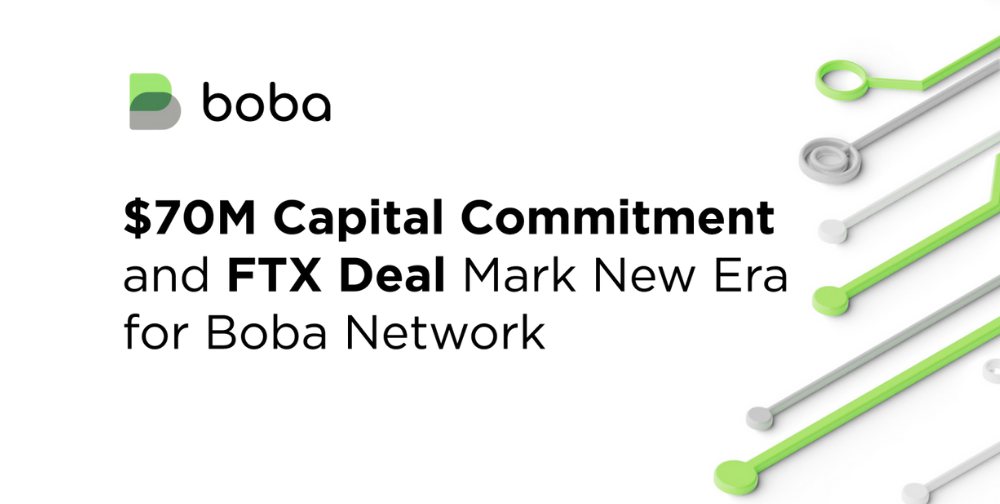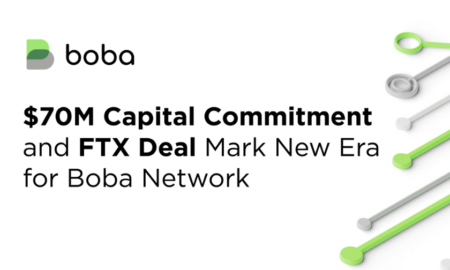In the fast-evolving world of financial technology, partnerships are becoming essential for driving innovation and meeting customer needs. By collaborating, fintech companies and traditional financial institutions can combine their strengths, leading to better services and greater market reach. These alliances not only enhance customer experiences but also foster financial inclusion and create new opportunities for growth. This article explores the significance of fintech partnerships, successful case studies, the benefits they bring, and the challenges that may arise.
Key Takeaways
- Fintech partnerships combine strengths, creating better solutions for customers.
- Collaboration helps traditional banks access new technology and markets.
- Successful partnerships require clear communication and shared goals.
- Data sharing is crucial for driving innovation in fintech collaborations.
- Cross-industry partnerships can lead to groundbreaking financial services.
The Importance of Strategic Fintech Partnerships

In the ever-evolving world of finance, strategic partnerships are becoming essential. These collaborations allow companies to combine their strengths, leading to better solutions for customers. Here’s why they matter:
Leveraging Complementary Strengths
- Shared Expertise: By working together, companies can pool their knowledge and skills.
- Resource Sharing: Partners can access each other’s resources, making it easier to innovate.
- Broader Reach: Collaborations can help companies tap into new markets and customer bases.
Driving Innovation Through Collaboration
- Faster Development: Working together can speed up the creation of new products.
- Creative Solutions: Different perspectives lead to unique ideas and solutions.
- Risk Reduction: Sharing responsibilities can lower the risks involved in launching new initiatives.
Enhancing Customer Experience
- Tailored Services: Partnerships can lead to more personalised financial products.
- Improved Support: Companies can offer better customer service by combining their strengths.
- Greater Accessibility: Collaborations can help reach underserved communities, making financial services more inclusive.
Strategic partnerships are not just about working together; they are about creating a synergy that benefits everyone involved. By joining forces, fintech companies can unlock new potential and drive meaningful change in the industry.
Successful Case Studies of Fintech Collaborations
HSBC and Tradeshift
In 2017, HSBC teamed up with Tradeshift, a major platform for business commerce. This partnership aimed to create a single digital platform that allows businesses to manage their global supply chains easily. The collaboration has led to:
- Streamlined operations for businesses.
- Enhanced visibility across supply chains.
- Improved efficiency in managing transactions.
Niyo and Equitas Small Finance Bank
In 2021, Niyo, an Indian fintech, partnered with Equitas Small Finance Bank to launch NiyoX, a wealth management suite. This partnership has expanded in 2023 to include:
- The introduction of Niyo Global debit and credit cards.
- Innovative solutions for finance and travel.
- Increased accessibility for customers seeking financial services.
Finsure, Frollo, and NextGen
In early 2023, Finsure, an Australian mortgage aggregator, collaborated with Frollo and NextGen. This partnership enabled Finsure to:
- Integrate comprehensive data insight models into its CRM platform.
- Provide clients with better-informed decisions.
- Enhance customer experience through data-driven solutions.
These collaborations highlight how fintech partnerships can drive innovation and improve customer experiences, showcasing the potential of combining traditional finance with modern technology.
Key Benefits of Fintech Partnerships

Fintech partnerships offer numerous advantages that can significantly enhance the capabilities of both parties involved. Here are some key benefits:
Access to New Markets
- Broader Reach: Collaborating with established firms allows fintechs to tap into new customer bases.
- Diverse Offerings: Partners can combine their services to create unique products that appeal to different market segments.
- Shared Resources: Access to each other’s networks can lead to increased visibility and customer engagement.
Cost Efficiency and Savings
- Reduced Operational Costs: By sharing resources and technology, partners can lower their overall expenses.
- Streamlined Processes: Collaborations often lead to improved efficiency, reducing time and costs associated with product development.
- Shared Risk: Financial burdens can be distributed, making it easier for both parties to invest in innovation.
Accelerated Innovation
- Faster Development: Working together can speed up the creation of new products and services.
- Enhanced Creativity: Combining different perspectives and expertise can lead to innovative solutions that neither could achieve alone.
- Access to Technology: Fintechs can leverage the latest technologies from their partners, enhancing their offerings.
Partnerships in fintech are not just about sharing resources; they are about creating a synergy that drives innovation and enhances the customer experience. By working together, companies can achieve more than they could on their own.
Challenges in Fintech Collaborations
In the world of fintech, partnerships can be incredibly beneficial, but they also come with their own set of challenges. Here are some key issues that often arise:
Integration and Deployment Issues
- Technical Compatibility: Different systems may not work well together, making integration difficult.
- Resource Allocation: Both parties need to invest time and money, which can strain resources.
- Change Management: Employees may resist new systems or processes, leading to delays.
Data and Analytics Difficulties
- Data Silos: Information may be trapped in separate systems, making it hard to share insights.
- Quality Control: Ensuring data accuracy across platforms can be challenging.
- Analytics Skills: Both partners need to have the right skills to interpret data effectively.
Aligning Mutual Goals
- Different Objectives: Each partner may have different aims, leading to conflicts.
- Communication Gaps: Misunderstandings can arise if expectations are not clearly communicated.
- Trust Issues: Building trust takes time, and without it, collaboration can falter.
Successful fintech partnerships require careful planning and open dialogue to overcome these challenges. By addressing these issues head-on, companies can create stronger, more effective collaborations that drive innovation and growth.
Building Effective Fintech Partnerships
Clear and Open Communication
To create a successful partnership, it’s essential to establish clear and open communication from the start. Here are some key points to consider:
- Set Expectations: Both parties should clearly outline their goals and visions to avoid misunderstandings.
- Regular Updates: Keep each other informed through regular meetings or reports to maintain transparency.
- Build Trust: Take commitments seriously to foster a trusting relationship.
Flexibility and Adaptability
In the fast-paced world of fintech, flexibility is crucial. Here’s how to ensure adaptability:
- Embrace Change: Be open to adjusting strategies as market conditions evolve.
- Collaborative Problem-Solving: Work together to find solutions to unexpected challenges.
- Feedback Loops: Regularly seek and provide feedback to improve processes and outcomes.
Setting Strategic KPIs
Establishing measurable Key Performance Indicators (KPIs) is vital for tracking success. Consider these steps:
- Define Success: Agree on what success looks like for both partners.
- Monitor Progress: Regularly review KPIs to assess the partnership’s effectiveness.
- Adjust as Needed: Be willing to modify KPIs based on performance and changing goals.
Effective partnerships are built on a foundation of trust, communication, and shared goals. By focusing on these elements, fintech collaborations can drive innovation and create lasting value for customers.
Cross-Industry Fintech Partnerships
In the evolving landscape of finance, cross-industry fintech partnerships are becoming increasingly important. These collaborations bring together different sectors, leading to innovative solutions that benefit consumers and businesses alike.
Technology and Fintech Collaborations
- Integration of advanced technologies: Fintechs often partner with tech companies to leverage cutting-edge tools, enhancing their service offerings.
- Shared expertise: Collaborations allow fintechs to tap into the technical know-how of tech firms, leading to better product development.
- Faster innovation cycles: Working together can speed up the process of bringing new solutions to market.
Healthcare and Fintech Innovations
- Improved patient care: Fintech partnerships with healthcare providers can lead to better financial solutions for patients, such as easier payment plans.
- Data sharing: Collaborations can facilitate secure data exchange, improving the overall healthcare experience.
- Access to funding: Fintechs can help healthcare startups secure funding through innovative financial products.
Retail and Fintech Synergies
- Enhanced customer experience: Retailers can use fintech solutions to streamline payment processes, making shopping easier for customers.
- Loyalty programmes: Fintechs can help retailers create more effective loyalty programmes, driving customer retention.
- Market expansion: Retailers can reach new customers by integrating fintech solutions into their services.
Cross-industry partnerships are not just about sharing resources; they are about creating a new ecosystem that benefits everyone involved. By combining strengths, companies can innovate in ways that were previously unimaginable.
The Role of Data in Fintech Partnerships
Data-Driven Decision Making
In fintech partnerships, data plays a crucial role in making informed decisions. Here are some key points:
- Improved Risk Assessment: By using advanced data analytics, fintechs can assess risks more accurately, leading to better lending decisions.
- Personalised Services: Data allows companies to tailor their offerings to meet individual customer needs, enhancing user satisfaction.
- Market Insights: Access to data helps partners understand market trends and customer behaviour, enabling them to adapt quickly.
Secure Data Exchange
Ensuring that data is shared securely is vital in fintech collaborations. Consider these aspects:
- Encryption: Data should be encrypted during transfer to protect sensitive information.
- Access Controls: Only authorised personnel should have access to shared data to prevent breaches.
- Regular Audits: Conducting audits can help ensure compliance with data protection regulations.
Enhancing Customer Insights
Data not only helps in decision-making but also improves customer understanding. Here’s how:
- Feedback Analysis: Collecting and analysing customer feedback can lead to better product development.
- Behaviour Tracking: Monitoring user interactions can reveal preferences and pain points, guiding future innovations.
- Predictive Analytics: Using data to predict future trends can help companies stay ahead of the competition.
In the world of fintech, data is not just a tool; it is the foundation upon which successful partnerships are built. By leveraging data effectively, companies can drive innovation and create value for their customers.
Future Trends in Fintech Partnerships
AI and Machine Learning Integration
The integration of AI and machine learning is set to revolutionise fintech partnerships. Here are some key points to consider:
- Enhanced Decision-Making: AI can analyse vast amounts of data, helping partners make informed decisions.
- Personalised Services: Machine learning algorithms can tailor financial products to individual customer needs.
- Risk Management: AI tools can identify potential risks faster, improving overall security.
Blockchain and Fintech
Blockchain technology is becoming increasingly important in fintech collaborations. Its benefits include:
- Transparency: Blockchain provides a clear record of transactions, enhancing trust between partners.
- Efficiency: Smart contracts can automate processes, reducing the need for intermediaries.
- Security: The decentralised nature of blockchain makes it harder for fraud to occur.
Sustainable Financial Solutions
As the world focuses on sustainability, fintech partnerships are also shifting towards eco-friendly solutions. This trend includes:
- Green Financing: Collaborations that promote investments in sustainable projects.
- Social Impact: Partnerships aimed at improving financial access for underserved communities.
- Regulatory Compliance: Working together to meet environmental regulations and standards.
The future of fintech partnerships lies in collaboration, where technology meets human needs, creating a more inclusive financial landscape.
The Human-Centred Approach in Fintech Collaborations
Enhancing User Experience
In the world of fintech, putting people first is essential. Here are some key points to consider:
- Understanding Needs: It’s crucial to know what users want and need from financial services.
- Feedback Loops: Regularly gathering feedback helps improve services and products.
- User-Friendly Design: Creating intuitive interfaces makes it easier for users to navigate financial tools.
Building Trust and Loyalty
Trust is the foundation of any successful relationship, especially in finance. To build trust:
- Transparency: Be open about how user data is used and protected.
- Consistent Communication: Keep users informed about updates and changes.
- Responsive Support: Quick and helpful customer service can enhance user satisfaction.
Creating Inclusive Financial Solutions
Inclusion is vital for reaching a broader audience. To achieve this:
- Diverse Offerings: Provide a range of products that cater to different financial needs.
- Accessibility: Ensure that services are available to everyone, including those with disabilities.
- Education: Offer resources to help users understand financial products better.
A human-centred approach in fintech is not just about technology; it’s about creating solutions that genuinely resonate with users, ensuring that their needs and experiences are at the forefront of innovation.
Regulatory Considerations in Fintech Partnerships
Navigating Compliance Challenges
When entering into fintech partnerships, it is crucial to understand the regulatory landscape. Here are some key points to consider:
- Know the regulations: Each country has its own set of rules governing financial services. Familiarise yourself with these to avoid penalties.
- Engage legal experts: Consulting with legal professionals can help navigate complex regulations and ensure compliance.
- Regular audits: Conducting periodic audits can help identify compliance gaps and rectify them promptly.
Ensuring Data Privacy
Data protection is a major concern in fintech collaborations. Here are some steps to ensure data privacy:
- Implement strong security measures: Use encryption and secure data storage to protect sensitive information.
- Establish clear data-sharing agreements: Define how data will be shared and used between partners to avoid misunderstandings.
- Stay updated on data laws: Regularly review data protection laws to ensure ongoing compliance.
Adapting to Changing Regulations
The regulatory environment is constantly evolving. To stay ahead, consider the following:
- Monitor regulatory changes: Keep an eye on new laws and regulations that may impact your partnership.
- Be flexible: Adapt your strategies and operations to comply with new regulations as they arise.
- Foster a culture of compliance: Encourage all team members to prioritise compliance in their daily activities.
In the world of fintech, understanding and adhering to regulations is not just a legal obligation; it is essential for building trust and ensuring long-term success in partnerships.
By addressing these regulatory considerations, fintech partnerships can thrive while maintaining compliance and protecting customer data.
The Impact of Fintech Partnerships on Financial Inclusion
Reaching Underserved Markets
Fintech partnerships play a crucial role in reaching underserved markets. By collaborating, traditional banks and fintechs can:
- Expand access to financial services for low-income individuals.
- Offer tailored products that meet the specific needs of different communities.
- Utilise technology to lower costs and improve service delivery.
Providing Affordable Solutions
These collaborations often lead to the development of affordable solutions. Key benefits include:
- Lower fees for banking services, making them accessible to more people.
- Innovative lending options that cater to those with limited credit histories.
- Financial education initiatives that empower users to make informed decisions.
Empowering Small Businesses
Fintech partnerships also focus on empowering small businesses. This can be achieved through:
- Access to capital that was previously unavailable.
- Streamlined processes for loans and payments, reducing wait times.
- Support services that help businesses grow and thrive in competitive markets.
Fintech partnerships are not just about technology; they are about creating a more inclusive financial landscape that benefits everyone. By working together, these companies can make a real difference in people’s lives.
Conclusion
In summary, fintech partnerships are reshaping the financial landscape by combining the strengths of traditional banks and innovative startups. These collaborations not only enhance service offerings but also allow companies to reach more customers and respond quickly to their needs. By sharing resources and insights, both parties can create better solutions that benefit everyone involved. As we move forward, it’s clear that working together will be essential for driving growth and ensuring that financial services remain accessible and relevant in a rapidly changing world.































